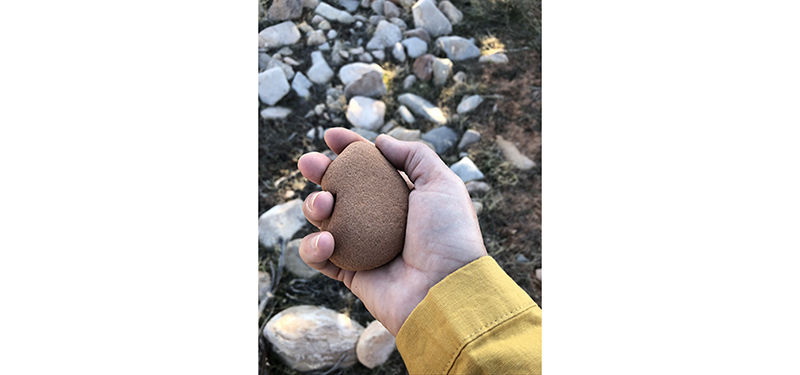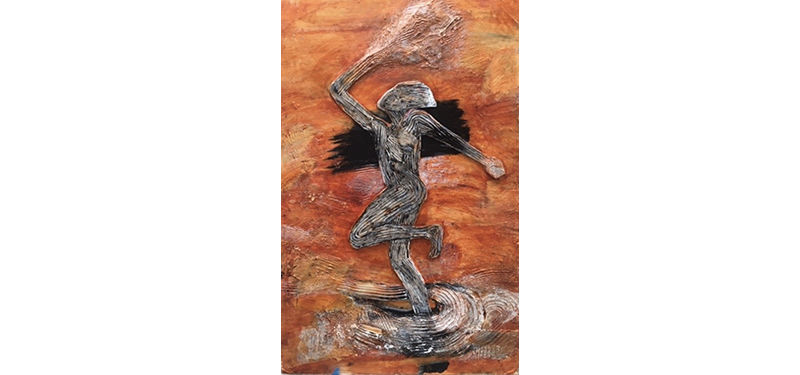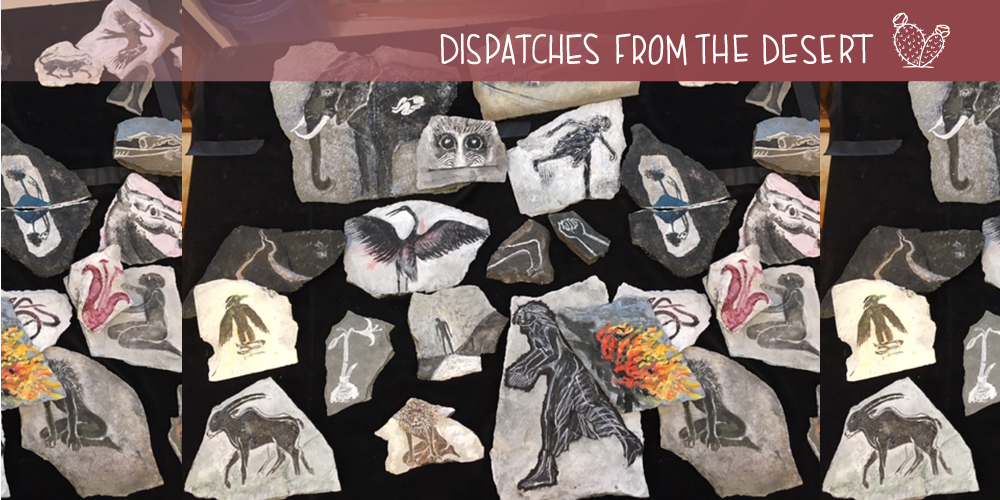15 April 2020
Castle Valley, Utah
y friend Mary Frank finds stones and paints them. She lives in New York. I imagine they are stones from the Catskills, stones that speak to her on her walks near the place where she calls home. They are flat stones, thin, irregular in shape. I would guess them to be shale or slate, perfect for an artist’s canvas.
The shape of the stone seems to inspire the subject: an elephant, a heron with outstretched wings, an antelope on the run, a lily, a woman walking away from a fire blazing behind her, another woman kneeling who has the face of a lion, a raised fist, the eyes of an owl.
I have seen multitudes of her painted stones creating a mosaic on the floor of her studio, now more talismans than art.

What is it that draws us down to pick up a rock and what turns a rock into a stone?
My husband says a stone is a rock with a story.
The last rock I picked up was in the wash by our house, down from Round Mountain. It caught my eye, the shape of an egg: sandstone in a bed of black and white cobbles. I bent down and picked it up. The rock fit perfectly in hand with an indent just right for my third finger to rest as if I was playing chords on the neck of a guitar. And I wondered why I stopped playing music and how much I miss it now.

I remembered days in Sevilla traveling alone, spending sangria-filled nights listening to flamenco music in poorly lit caverns as women dressed in red with black castanets danced with what Federico Garcia Lorca called “duende.” Lorca defined duende as “Those dark sounds…the mystery, the roots that cling to the mire that we all know, that we all ignore, but from which comes the very substance of art. ‘Dark sounds”…A mysterious force that everyone feels and no philosopher has explained…in sum, the spirit of the earth.” What Edward Hirsch calls “the demon and the angel.”

Perhaps what we as artists and writers want most is to bring these dark notes deep within us to the surface in a form we can see, touch, taste, hear, and smell – especially now – when we are struggling to know if we are breathing in the suffocating truth of this pandemic.
And so we retreat to our studios and paint stones or flee to the desert and walk where to distance oneself from people is what drew us here from the beginning as we call this isolation home. Duende loves the edge, the wound... Each rock I touch becomes a stone that cuts into a story that is flesh in my hand, the hand that allows me to write “through the possibility of death.”
Perhaps, this is the time of “Seeking the duende,” where Lorca explains, “there is neither map nor discipline. We only know it burns the blood like powdered glass, that it exhausts, rejects all the sweet geometry we understand….”
And so when I see Mary Frank’s rocks turn to stones transformed through the arrival the duende – as she paints one pale figure caught in the river gripping with both hands to the edge of breaking ice tinged with red — I know there is a place for truth in this melting world of lies.
Terry Tempest Williams
Terry Tempest Williams is a Utah native, writer, naturalist, activist, educator—and patient. Social distancing in the desert brings Terry into close contact with the desert’s vistas and wildlife.
For people who give a lot, it’s hard to receive. Harvard Graduate School of Education student Niharika Sanyal shares practices of acceptance and gratitude to support renewal within the health care community.
Terry Tempest Williams is a writer, naturalist, activist, educator—and patient. In this third “Dispatch from the Desert,” Terry examines what natural disasters leave in their wake, both in the earth and in our memory.
